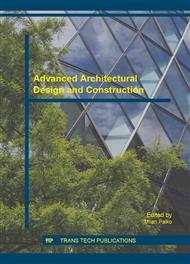p.33
p.39
p.45
p.51
p.57
p.63
p.69
p.75
p.81
Proposal of Architectonic – Construction Solution of Barrier-Free Measures of Entry Premises in Non-Residential Buildings Specified for Use by the Public
Abstract:
Barrier-free environment should be an obvious part of our life. The reality is but different. In non-residential buildings specified for use by the public one can uselessly look for information useful for persons with limited ability of movement and orientation. The question of information boards is very disregarded and often non-dealt with at all. Upon entry into most of the buildings you will not find any optical system for deaf people, acoustic system (voice light) for blind people or information related to barrier-free access for people with movement handicap. Project engineer, upon performing his work has to take into consideration the fact that building being designed shall be used by all groups of citizens. Try to look around with eyes of a person who moves on wheelchair or through a walking stick. You will find missing information and orientation system on possibilities of barrier-free movement inside the building on each and every building.
Info:
Periodical:
Pages:
57-62
Citation:
Online since:
January 2016
Authors:
Keywords:
Price:
Сopyright:
© 2016 Trans Tech Publications Ltd. All Rights Reserved
Share:
Citation:


